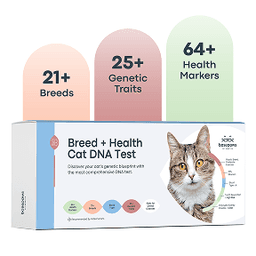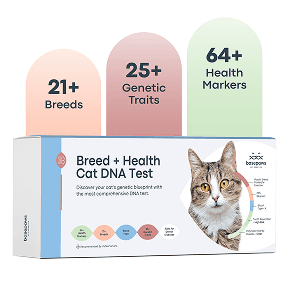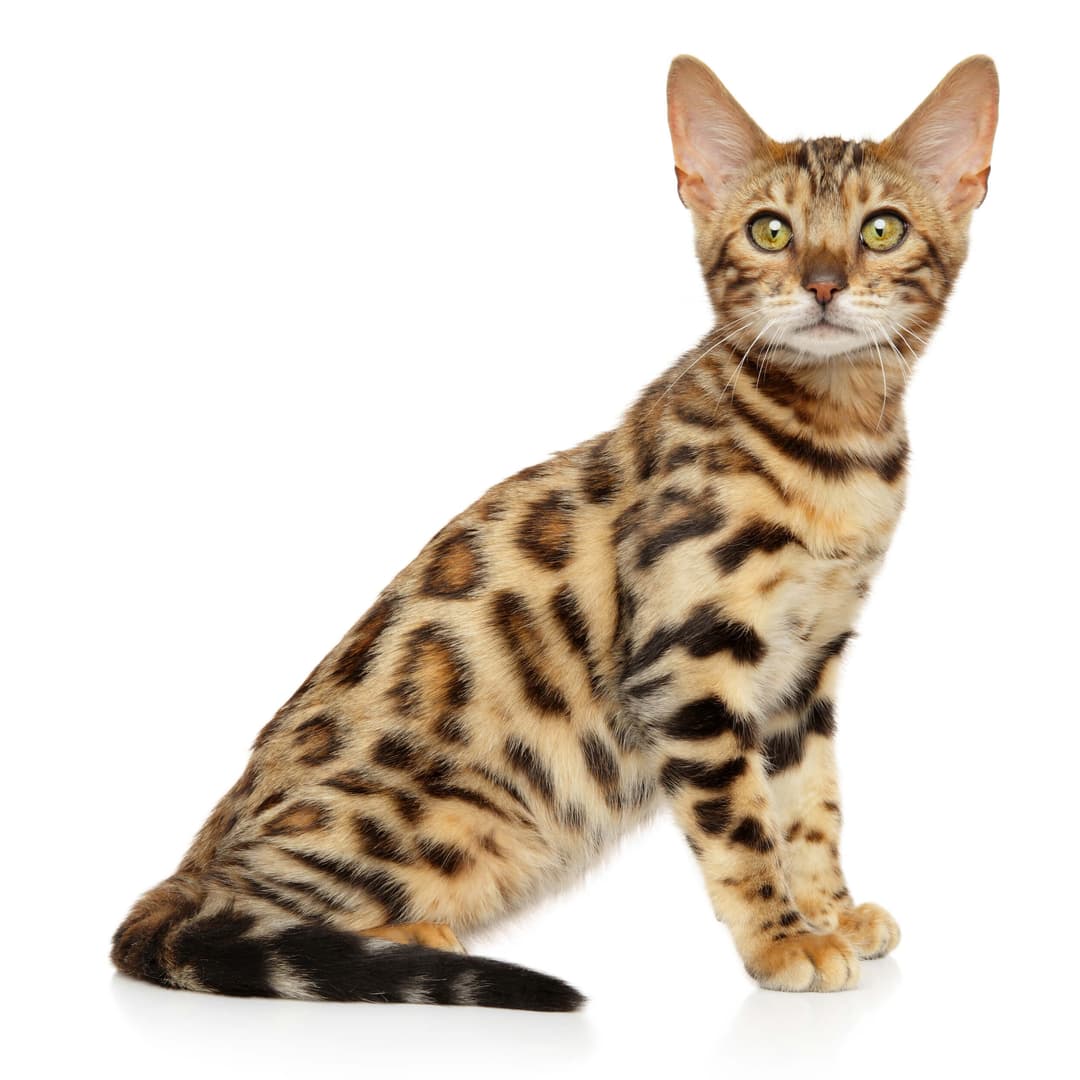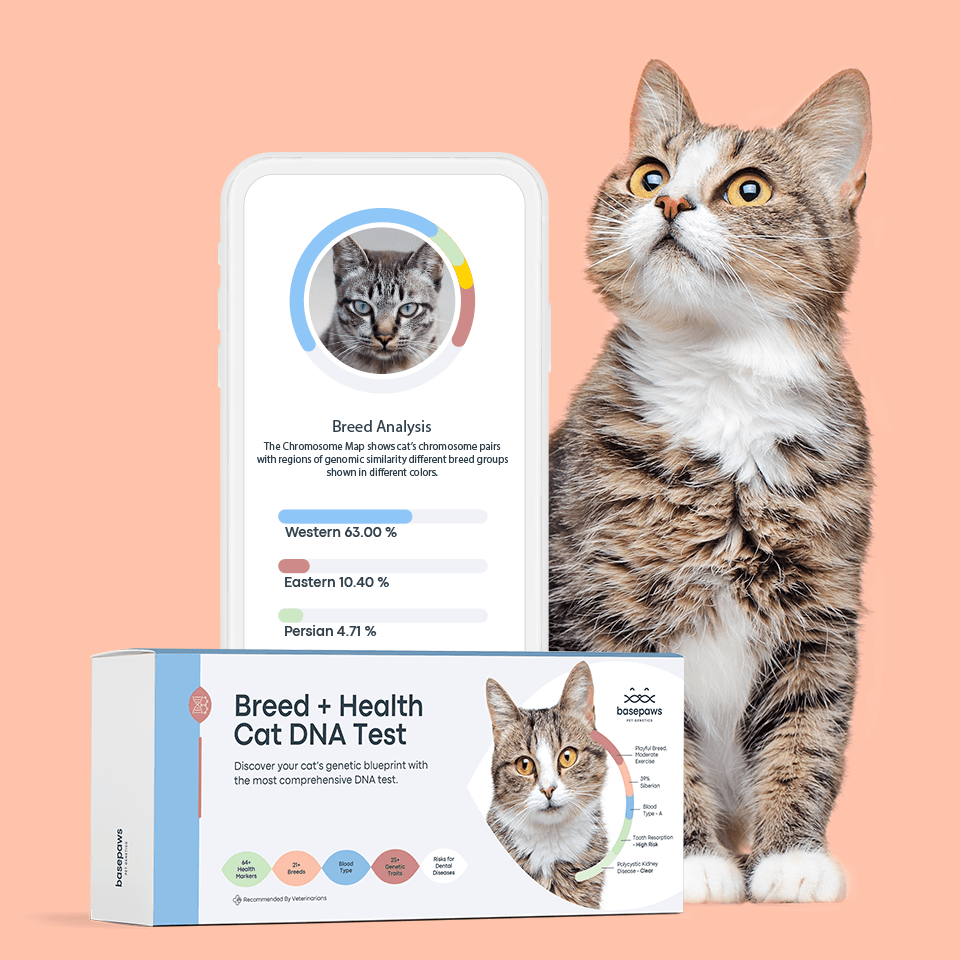Discover your cat's connection to this breed and 20 others


Discover your cat's connection to this breed and 20 others



Often referred to as the "Miniature Leopard" of the domestic cats, the Bengal is a unique breed designed to resemble exotic wild cats such as Ocelots, Margays, and Clouded Leopards. Bengals are active, energetic, and playful kitties who have a lean and muscular body, broad head, relatively short ears, and a long neck.
Often referred to as the "Miniature Leopard" of the domestic cats, the Bengal is a unique breed designed to resemble exotic wild cats such as Ocelots, Margays, and Clouded Leopards. Bengals are characterized by a lean and muscular body, broad head, relatively short ears, and a long, muscular neck. They have coat patterns that are spotted/rosetted or marbled that can be any shade of orange-brown, light brown, or silver. Spots and rosettes are vivid and contrasted, and often multicolored. Many Bengals have fur that beautifully sparkles when the light catches the tips of their coat hairs.
Bengals arrived on the scene in California in 1963, as a result of selectively breeding hybrids of the Asian leopard cat with the domestic cat. The goal was to create an aesthetically beautiful cat that was also friendly, exhibiting the vivid, contrasting coat qualities of the leopard cat and the docile temperament of the domestic cat.
If you're looking for an active playmate with lots of purrsonality, then a Bengal is the cat for you! Bengals are friendly and devoted companions with exceptional curiosity, energy, and agility. They exhibit confidence and flare while constantly on the move. Bengals are highly intelligent. They are known for their love of playing games of fetch and are very fond of playing in water.
Bengals are known to be affected by several genetic diseases, such as Bengal progressive retinal atrophy (or PRA-b). This is a group of diseases characterized by progressive, bilateral retinal degeneration. The breed is also susceptible to erythrocyte pyruvate kinase deficiency (PK-Def), an inherited metabolic disorder characterized by disrupted survival of the red blood cells, and to hypertrophic cardiomyopathy (HCM), the most common form of feline heart disease.
A Bengal cat is domesticated after the 4th generation. In order to design a perfectly happy, confident, and friendly kitty, the breeding rules state that the Bengal is domesticated only after four generations of crossbreeding with the Asian leopard cat. This way, the vivid coat patterns of their wild relatives are preserved, while the Bengal acquires the temperament and personality more typical of a domestic cat.
The silver variants are known as Snow Bengals. The Snow Bengals are a result of crossbreeding the leopard cat with the Siamese.
There are longhaired Bengals. Although semi-long-haired Bengals have appeared since the early beginnings of this young breed, long-haired Bengals have only been recognized only by the New Zealand Cat Fancy registry.
They are exceptionally intelligent. Bengals are known to be exceptional learners with great curiosity, abundant curiosity, and energy. They often learn to open doors or other items by themselves, and they've shown to be highly trainable. You can teach your Bengal kitty many things with a little effort and patience!
Recommended by top vets with decades of experience
21 breeds
64 genetic health markers
50 genetic trait markers
